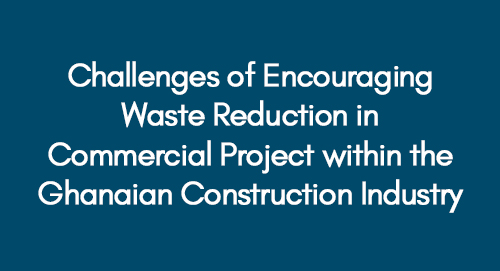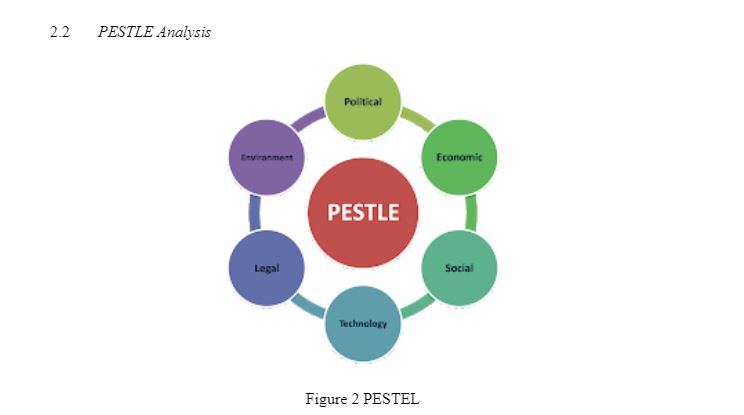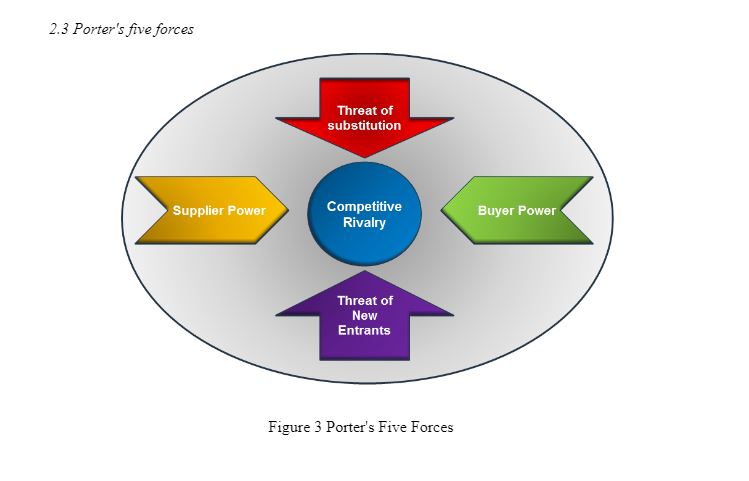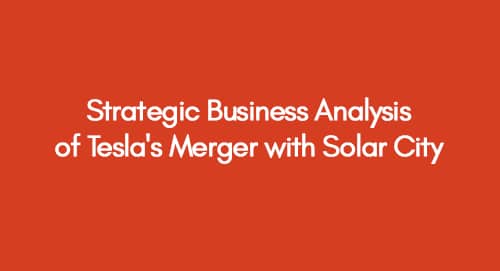
Analysis of the Factors Affecting the Choice of Psychiatry as a Medical Specialty
June 5, 2022
Challenges of Encouraging Waste Reduction in Commercial Project within the Ghanaian Construction Industry
June 5, 2022 Download PDF File
Download PDF File
Explore the strategic dynamics of Tesla's SolarCity merger, unveiling its transformative influence on sustainable energy and electric mobility. Analyze the synergies and challenges that define this pioneering alliance. In 2016, Tesla, under the leadership of the visionary entrepreneur Elon Musk, captured global attention by embarking on a bold venture: acquiring SolarCity, a prominent player in the solar energy industry. This strategic move was not merely a business transaction but a visionary step towards establishing Tesla as a comprehensive, sustainable energy powerhouse. The merger's core objective was to forge a vertically integrated company, synergizing Tesla's electric vehicles and energy storage prowess with SolarCity's cutting-edge solar products. The ambition was to create a unified entity capable of offering end-to-end clean energy solutions, thus propelling Tesla beyond its roots as an electric vehicle giant.
Sustainable Photovoltaic Technology Development in the Kingdom Of Saudi Arabia
Delving into the intricacies of Tesla's merger with SolarCity unveils a strategic business analysis extending beyond a single industry's confines. This integration sought to harmonize electric vehicles, energy storage solutions, and solar technology, envisioning a seamless interplay of these components. Tesla aspired to provide consumers with a holistic suite of sustainable energy offerings, catering to residential and commercial needs. By exploring the ramifications of this audacious merger, we can uncover the strategic threads that have woven the fabric of Tesla's trajectory, shaping the company into a trailblazer in pursuing a greener, more sustainable future.
Introduction
This report aims to analyze the strategic development of Tesla's merger with Solar City, offering comprehensive insights into Tesla's plans to collaborate with Solar City to advance solar-driven energy sources. The contemporary business landscape is characterized by globalization, necessitating strategic thinking and the sustainable implementation of practices for competitive success. Corporate strategy involves planning, commitments, decisions, and actions to achieve strategic competitiveness and projected returns (Almuzel, 2018).
In its strategic development, Tesla, facing challenges and opportunities, adheres to a global standard of strategic management due to the high demand for reducing vehicle costs and low pressures for local responsiveness (Song, 2019). The automotive industry in which Tesla operates presents unique challenges, as establishing consumer trust in this sector requires considerable time and dedication. Despite acknowledging that Tesla is not solely a car-manufacturing company, Elon Musk envisions it as a future innovation-based firm targeting the energy-manufacturing sector. Tesla's collaboration with Solar City exemplifies this vision, referred to as the "Tesla merger with Solar City."
To begin the analysis, this report delves into the strategic business analysis of Tesla itself, seeking to understand the company's motivations and objectives behind merging with Solar City.

SWOT Analysis
Tesla has become a focal point of discussion and analysis within the automobile industry, substantially influencing the sector's economic evolution (Boggild, 2016). To comprehend the strategic management of the company, the following SWOT analysis has been conducted:
Strengths Tesla employs in competitive industries and is one prominent example of such companies, which is remarkably successful due to its diversity and technological advancements (Alghalith, 2018). Tesla's sales increase marks it as the leading automotive company, delivering 367500 vehicles. The unparalleled advancement of luxury and innovation has brought the company to new levels of success, leaving behind exclusive companies like BMW and Mercedes. Another strength of Tesla is that it is the best company with the finest electric cars (Mayfield, 2018). When compared by the range, Tesla's cars cover the best and maximum distance, i.e. 600 kilometres on a time-charged battery (Song, 2019). | Weaknesses One of Tesla's weaknesses is the high-quality standards of innovation that may turn the production procedure into high risk (Yang, 2017). Additionally, the process of launching, manufacturing, and producing delays affect the launch of their new vehicles, making the competitive edgeless ratio. Another weakness is the issue of supply and demand, as due to complex experiments and procedures, the company faces an unbalanced system of meeting the required production (Liang, 2017). The primary reason for decreased production is the limited availability of batteries. The shortage of charging supply affects sales, resulting in the company's reputation being at risk (Liu and Meng, 2017). |
Opportunities The most reasonable opportunity for Tesla to gain potential benefits is expanding its sales in the Asian market (Tehseen, 2018). Asia is an untapped market for electric and innovative automobiles, and Tesla can avail the chase nice to prove its efficiency and exceptional production of electric cars. Another opportunity that can benefit Tesla is the affordability of electric cars (Cheong, 2016). The company can expand its audience market by launching Model 3, which is an affordable version of Model S. A big game-changer for Tesla is introducing in-house technology for battery production. The company aims to develop its battery cells to increase manufacturing costs and reduce production costs (Liu, 2017). | Threats Despite Tesla's assurance of premium quality and exceptional production standards, the company has the most significant threat of product liability claims (Liu and Meng, 2017). Even though the company had launched various autopilot vehicles to address liability concerns, none were successful in case of car accidents. Another emerging threat for the company is the extensive competition from alternative vehicles and self-driven technology (Cheong, 2016). Most automobile companies that belong to the luxury class, including Mercedes, BMW, and the economy class Toyota and Ford, are in line to give tough competition for future technology in electric cars. Apart from this, the unsustainable confidence and increased disbelief affect the company overall (Ferreira, 2019). The deficiencies and product defects cause distress among users, which may impact business development in the long run. |
PESTLE Analysis
PESTLE Analysis is a strategic management tool that examines the external macro-environmental factors affecting an organization. It assesses Political, Economic, Social, Technological, Legal, and Environmental factors, providing a comprehensive understanding of the external influences shaping a business's decision-making and operations.

With a current valuation surpassing 5 trillion dollars, the global automotive industry is anticipated to reach nearly 9 trillion dollars in the coming decade (Statista, 2020). The financial well-being of numerous countries and the overall global economy is intricately tied to the trillions generated by this industry. Consequently, fluctuations in global politics or the economy have ripple effects on the automotive sector, impacting factors such as affordability and feasibility for potential buyers of companies like Tesla. The ensuing PESTLE analysis of the worldwide automotive industry is outlined below:
Political Factors
A pivotal factor influencing the global automotive industry is the imminent decision on a deal or no-deal Brexit. Projections indicate that Brexit could have far-reaching global consequences, with estimates suggesting a staggering cost of over 50 billion euros to the automotive sector (France-Presse, 2019). This substantial impact extends beyond traditional automotive enterprises, affecting even American-based brands like Tesla with ambitions of European market expansion. Despite these challenges, there exists potential for innovative measures to capitalize on the void created by Brexit, transforming adversity into opportunity within the automotive industry.
Economic Factors
The ongoing trade conflict between the USA and China is poised to exert widespread global ramifications, notably impacting industries such as the global automotive sector. China, renowned as the largest global market for car sales, has experienced elevated prices and diminished demand due to the repercussions of the trade war (Reuters, 2019). The direct correlation between the trade war and decreased demand implies a persistent negative influence on the automotive industry for as long as the trade tensions persist.
Social Factors
Within the realm of social factors, the emergence of car-hailing, ride-sharing, and rental applications has brought about a transformation in societal behaviours. As noted by Thomas (2019), the ascent of companies like Uber has revealed the inability of traditional car manufacturers to provide reduced travel and maintenance expenses. Nevertheless, the impact of these social dynamics is contingent upon the innovation and adaptability of companies or the industry, presenting an opportunity for proactive responses.
Technological Factors
This facet offers a prime opportunity for car manufacturers to foster innovation and expand their enterprises. Artificial Intelligence (AI) and autonomous vehicles represent groundbreaking technologies capable of attracting consumers and yielding substantial revenue (Eliot, 2019).
Legal Factors
Brenner and Herrmann's (2018) research emphasizes the ongoing legal dynamics affecting the automotive industry, encompassing alterations in patent laws, copyright laws, safety protocols, and legal challenges related to competition. In this dynamic business environment, car manufacturers must adopt a proactive stance to stay abreast of evolving regulations, particularly with the advent of driverless cars and ride-hailing alternatives.
Environmental Factors
There is a widespread acknowledgement that the automotive industry and automobiles constitute one of the foremost contributors to air pollution globally, bearing the most substantial carbon footprint (Pervaiz et al., 2016). This vulnerability exposes the industry to substantial criticism, impacting its brand image, with any changes in environmental laws exerting a direct influence on the sector.
Political Unpredictable Brexit conundrum, deal or no-deal scenario – Opportunity | Economical The US-China trade war and fall in the global economy – Threat |
Social Rise of ride-hailing applications like Uber that offer lower costs – Opportunity | Technological AI and self-driving technology in the automotive industry – Opportunity |
Environmental High rate of pollution and changing legislation for sustainability – Threat | Legal Continuous flux in the legislative framework for car manufacturers, with AI, Uber, environmental laws, etc. – Threat |

Comprising multibillion-dollar brands that have expanded their reach into international markets, the global automotive industry's strategic approach is comprehensively examined through a global application of Porter's Five Forces framework. The analysis is outlined below:
Competitive Rivalry: High
Whether employed for everyday needs or as luxury vehicles, the automotive industry is marked by fierce competition. According to Yoffie (2019), brands often compete directly with buyers in a market characterized by high customer loyalty and maturity. Most brands make substantial investments in research, development, and innovation to distinguish themselves, viewing these endeavours as the primary means to gain a competitive edge over their counterparts.
Bargaining Power of Buyers: Moderate
Typically, consumers wield limited bargaining power in the automotive industry. However, demand-based pricing adjustments can occur in transactions involving government agencies procuring substantial fleets (Akpinar and Vincze, 2016). Additionally, the proliferation of technological advancements has resulted in a diverse range of products available at competitively affordable prices, conferring moderate bargaining power to buyers.
Bargaining Power of Suppliers: Weak
The primary factor contributing to the diminished bargaining power of suppliers is the abundant availability of raw materials in the automotive industry (Akpinar and Vincze, 2016). This abundance empowers car manufacturers to shift between suppliers, mitigating reliance on any single supplier. Consequently, the landscape is characterized by the absence of a dominant entity among automotive suppliers, with the majority being smaller entities.
Review the Following:
- Report Writing Service
- Model answers and exam note-writing
- Statistical analysis services
The Threat of Substitutes: Moderate
Yoffie (2019) asserts that car manufacturing customers exhibit high loyalty levels, significantly reducing the likelihood of choosing substitutes. Nevertheless, the emergence of ride-sharing alternatives such as Uber poses a potential threat to the automotive industry (Thomas, 2019). This challenge, however, can be effectively addressed through innovation and the provision of reduced travel and maintenance costs.
The Threat of New Entrants: Weak
The substantial initial investment required to establish a car manufacturing industry is a deterrent for many investors, prompting them to favour investment in established brands over new ventures (Rübmann et al., 2015). Additionally, the heightened competition within the industry is another factor dissuading stakeholders from entering the market.
Threat | Opportunity |
Ongoing US-China Trade War Environmental Damage and Carbon Footprint of the Car Industry Legislative Changes in the Environmental, Ownership and Patent Laws. | Ambiguity Between Deal or No-Deal Brexit Market-Based on High Rivalry with a Loyal Customer Base The advent of technology like AI and Driver-Less cars |
How Does It Work?

Fill the Form
Please fill the free topic form and share your requirements

Writer Starts Working
The writer starts to find a topic for you (based on your requirements)

3+ Topics Emailed!
The writer shared custom topics with you within 24 hours
Internal Analysis
Internal analysis thoroughly examines an organization's internal resources, capabilities, and competencies to identify strengths and weaknesses. It provides insights into the company's core competencies, the effectiveness of its operations, and the alignment of its internal factors with strategic objectives, facilitating informed decision-making for sustainable competitive advantage.
Resources
Resources encompass a company's tangible and intangible assets, including financial capital, physical infrastructure, intellectual property, and human capital. Effective resource management is crucial for achieving strategic objectives and sustaining a competitive edge in the dynamic business landscape.
Physical Across the world, Tesla has opened more than 50 stores and a Gigafactory for manufacturing batteries – Strength. | Financial In short, Tesla has made ground in Canada, Australia, and New Zealand markets with various investors like Google and Daimler – Strength. |
Intangible Innovation – The key element of success for Tesla is its innovation that stands out in the competitive business market – Strength Reputational – Recently, Tesla's reputation has taken a hit due to delays in production and failed operations – Weakness. | Human Research & Development - The company focuses highly on the R&D department, through which the team highlights improvements and advancements – Strength. |
Value Chain Analysis
Value Chain Analysis involves dissecting an organization's activities into primary and support processes to identify areas where value is created or added. Scrutinizing each step, from production to delivery, enables companies to optimize their operations, enhance efficiency, and ultimately achieve a competitive advantage in the marketplace.
Inbound Logistics | Tesla has leased various other warehouses in different corners of the world, including America, Asia, and Europe. High-quality products are manufactured due to the expertise offered by executives and leaders. |
Outbound Logistics | Tesla's leading manufacturing network is based in Gigafactory, Nevada. Tesla ships its electric vehicles to stores in the US and 29 countries worldwide. Consumer complaints about delayed delivery of products |
Operations | Tesla's operations are based on the automotive segment and energy generation while storing solar energy capacity. Collaboration with Daimler and Toyota will help Tesla increase operations |
Marketing & Sales | The company usually uses its website and other digital sources for marketing and promotions. Tesla has the strategy of customizing each order to the client's demand. This is a great marketing technique, but it results in fewer sales. |
Services | Tesla offers after-sale services to its customers through a wide network of retail stores and service stations in various countries. Tesla's customer service is not entirely favourable for customers. |
VRIO Model
The VRIO model assesses the value, reliability, imitability, and organized exploitation of an organization's resources to determine their strategic significance. It serves as a robust framework for evaluating the competitive potential of a firm's capabilities and resources in achieving sustainable competitive advantage.
VRIO ANALYSIS V: Value-creating potential R: Rarity I: Imitability O: Organisation support | GRADING KEY A: Outstanding Value and Performance B: Valuable but not vital source of advantage C: Beneficial but less significant D: Unlikely to be sustainable | ||||||
V | R | I | O | Strategic Implications | |||
CORE COMPETENCIES | |||||||
Management & Leadership | A | A | A | A | JB Straubel is the co-founder and CTO of Tesla, a skilled professional. The company also includes veterans from the industry in positions like VP, VP of Powertrain, and VP of Supply Chain. The combination of expert experiences offers great value and advantages to the company (Borén, 2017). | ||
Outbound Logistics | A | A | A | A | Tesla's exclusive opportunity for its customers to customize their vehicles is beneficial, although it results in late delivery complaints. | ||
Advanced Manufacturing Plant | A | A | A | A | One of the world's best elite car manufacturers is Tesla's factory, which owns around 5.3 million square feet of space for assembling and management. | ||
Services | A | A | A | A | The company owns an extensive network of stations for supercharging worldwide. It helps customers charge their vehicles (Robèrt, 2017). | ||
Operations | A | A | A | A | Tesla has established strategic alliances with different OEM alliances, such as Toyota and Daimler, to maintain strategic coalitions. | ||
Applying value chain analysis and the VRIO model to assess Tesla's manufacturing capabilities has revealed several distinctive competencies. Among these, the most notable advantage lies in the efficiency of outbound logistics operations. These operations exhibit flexibility within the manufacturing system and are enhanced through strategic collaborations. A noteworthy feature in outbound logistics is the provision of customization options, a valuable aspect for customers that adds a layer of complexity for competitors to emulate. Tesla's official website showcases this evidence, offering a catalogue of models with the latest designs and technology, a rarity in an industry where customization options are predominantly associated with luxury vehicles (Fettermann, Echeveste, and Tortorella, 2017).
Weakness | |
Outbound Logistics that Offer Services of Customisation Advanced Services in Manufacturing with Latest Technology in Assembling and manufacturing Operational Mergers with Toyota and SolarCity that allow innovation and Generate Revenue | Delivery and Launch Delays Because of the Feature of Production-On-Demand Failed Operations and Broken Promises on New Models and Technology The Consequent Fall in Reputation Due to the Failed Operations |
Strategy Evaluation
Strategy evaluation is an ongoing and dynamic process that systematically assesses the effectiveness and efficiency of a company's strategic initiatives against predetermined goals. It serves as a critical feedback loop, enabling organizations to adapt and refine their strategies in response to internal and external factors.
Merger with Solar City
In 2016, Tesla introduced an innovative concept by acquiring SolarCity, a solar panel manufacturer, to integrate electricity generation into its portfolio. The all-stock offer of $2.6 billion was swiftly accepted by Tesla's CEO, Elon Musk, anticipating substantial revenue streams for the company's expansion and emphasised the energy storage vision and a sustainable, green economy (Cheong, 2016). Despite Wall Street experts expressing concerns about the practical success of the merger and potential financial burdens, Musk's motives faced scrutiny, raising apprehensions in the business environment.
Post the 2016 acquisition of SolarCity, an examination of the 2017 and 2018 figures reveals shifts in Tesla's financial health, profitability, and revenue. Notably, Tesla experienced a 68% increase in sales, aligning with the expansion of product offerings. However, the gross margin contracted from 23% to 19%, attributed to a 76.6% surge in production costs (NASDAQ, 2017). This cost escalation is presumably linked to SolarCity, which is responsible for addressing concerns related to product development and installation costs and efficiency. Given the tech-oriented nature of both companies, a significant portion of operating expenses was allocated to research and development, indicating a heightened focus on innovation to maintain a competitive edge in the market.
SAF Test
As of my last knowledge update in January 2022, there isn't specific information regarding a term or concept referred to as the "SAF Test." It's possible that it could be an acronym or term related to a field or industry that emerged or gained significance after that date.
If the "SAF Test" pertains to a subject introduced or developed post-2022, kindly provide more context or check the latest sources for the most accurate and relevant information.
Weakness Production and Launch Delays Failed Operations Tesla's Falling Reputation | Strength Outbound Logistics like customization Advanced Services in Manufacturing with Latest Technology Operational Mergers | |
Threat US-China Trade War Environmental Damage Legislative Changes | Sustainability is at the core of the merger in the form of a green merger. However, operations need to be made more effective. | Advanced technology and innovative means in the operational strategy of the Tesla-SolarCity merger will make it successful. |
Opportunity Brexit Highly Competitive Market AI and Driver-Less Cars | Products developed under the merger will help improve customer perception and provide a competitive advantage over other players. | Offering an innovative product in changing political markets can still appeal to customers and increase sales. |
Suitability
The Tesla and SolarCity merger case illustrates a strategic approach deemed effective and fitting for Tesla's objectives (Mayfield, 2018). This strategy proves appropriate if revenue generation aligns with potential increases in production costs. The suitability extends to the valuable opportunities presented by SolarCity panels in power generation and advancing the green economy, aligning with the envisioned strategy (Madson, 2020). Despite apprehensions regarding debt and rising production costs, the overarching concept is anticipated to yield long-term benefits, fostering an efficient and robust collaborative innovation between the two companies.
Acceptability
Regarding the acceptability of the proposed strategy, it introduces an element of risk, particularly concerning innovation in solar panel energy. Traditional investor behaviour tends to favour established productions (Kremer, 2020), potentially posing challenges for Tesla in gaining returns through merged productions and promotions. Integrating innovation into customer preferences may also take time to become a compelling factor for those willing to make substantial expenditures. Utilizing the Power/Interest Matrix to identify stakeholders in Tesla's business ventures, it becomes imperative for Tesla to strategically engage key players in the merger, with customers and employees being relatively easier to satisfy.
Key Players Shareholders Investors | Keep Satisfied Customers Employee |
Keep Informed Government | Minimal Effort Community |
Feasibility
The success of this merger hinges on having a viable and workable business model. Tesla's limited emphasis on marketing strategy raises concerns among marketers and stakeholders (Molenaar, 2020). Introducing newly developed products will present an initial challenge both companies must navigate effectively. Additionally, addressing defects or damages will require careful consideration and rectification by both entities. Financially, the merger's success is contingent on the effective performance of its products for the seamless operation of the combined venture.
References
Akpinar, M. and Vincze, Z., 2016. The dynamics of coopetition: A stakeholder view of the German automotive industry. Industrial Marketing Management, 57, pp.53-63.
Alghalith, N., 2018. Tesla: innovation with information technology. International Journal of Business Research and Information Technology, 5(1), pp.37-51.
Almuzel, M., Goudarznia, T., Daneshi, A., Saadatmand, M. and Yacoub, M., 2018. Tesla Solar Roof Marketing Plan.
Boggild, L., 2016. Investors watch Tesla. Alternatives Journal, 42(3), p.11.
Borén, S., Nurhadi, L., Ny, H., Robèrt, K.H., Broman, G. and Trygg, L., 2017. A strategic approach to sustainable transport system development–Part 2: the case of a vision for electric vehicle systems in southeast Sweden. Journal of Cleaner Production, 140, pp.62-71.
Brenner, W. and Herrmann, A., 2018. An overview of technology, benefits and impact of automated and autonomous driving on the automotive industry. In Digital marketplaces unleashed (pp. 427-442). Springer, Berlin, Heidelberg.
Cheong, T., Song, S.H. and Hu, C., 2016. Strategic alliance with competitors in the electric vehicle market: Tesla motor's case. Mathematical Problems in Engineering, 2016.
Eliot, L. 2019. Noodling on How Much Revenue Self-Driving Cars Will Ultimately Generate. Forbes. [Online] Viewed 7 April 2020. Available at: https://www.forbes.com/sites/lanceeliot/2019/12/10/noodling-on-how-much-revenue-self-driving-cars-will-ultimately-generate/#106387e83074
Ferreira, M., 2019. Tesla and the electric vehicle market in 2018 (Doctoral dissertation).
Fettermann, D.C., Echeveste, M.E.S. and Tortorella, G.L., 2017. The benchmarking of the toolkit used for mass customization in the automobile industry. Benchmarking: An International Journal.
France-Presse, A. 2019. No-deal Brexit will have 'seismic' impact, says European car industry. the Guardian. [Online] Viewed 7 April 2020. Available at: https://www.theguardian.com/business/2019/sep/23/no-deal-brexit-will-have-seismic-impact-says-european-car-industry
Liu, J.H. and Meng, Z., 2017. Innovation model analysis of new energy vehicles: Take Toyota, Tesla and BYD as examples. Procedia engineering, 174, pp.965-972.
Madson, K.M., Franz, B., Molenaar, K.R. and Kremer, G.O., 2020. Strategic development of flexible manufacturing facilities. Engineering, Construction and Architectural Management.
Mayfield, E.S. and Siriwardane, E.N., 2018. Tesla-SolarCity.
Pervaiz, M., Panthapulakkal, S., Sain, M. and Tjong, J., 2016. Emerging trends in automotive lightweighting through novel composite materials. Materials Sciences and Applications, 7(01), p.26.
Reuters. 2019. Chinese auto sales post-worst-ever monthly decline as trade war intensifies. Reuters.com. [Online] Viewed 7 April 2020. Available at: https://www.reuters.com/article/us-china-autos/chinese-auto-sales-post-worst-ever-monthly-decline-as-trade-war-intensifies-idUSKCN1TD0IQ
Rübmann, M., Lorenz, M., Gerbert, P., Waldner, M., Justus, J., Engel, P. and Harnisch, M., 2015. Industry 4.0: The future of productivity and growth in manufacturing industries. Boston Consulting Group, 9(1), pp.54-89.
Song, K., 2019, December. Does the Acquisition of SolarCity Benefit Tesla's Shareholders? In 2019 International Conference on Economic Management and Model Engineering (ICEMME) (pp. 536-538). IEEE.
Statista. 2020. Global Automotive Industry Revenue between 2017 and 2030 (in US Billion Dollars). Statista.com. [Online] Viewed 7 April 2020. Available at: https://www.statista.com/statistics/574151/global-automotive-industry-revenue/
Stringham, E.P., Miller, J.K. and Clark, J.R., 2015. Overcoming barriers to entry in an established industry: Tesla Motors. California Management Review, 57(4), pp.85-103.
Tesla. 2020. Design Your Model. Tesla.com. [Online] Viewed 7 April 2020. Available at: https://www.tesla.com/?redirect=no
Thomas, D. 2019. Why are more and more car companies teaming up? BBC News. [Online] Viewed 7 April 2020. Available at: https://www.bbc.com/news/business-47376677
Yang, S. And liang, C., 2017. Analysis of the Competitiveness of Tesla Development Mode and Its Enlightenment to the Chinese Electric Vehicle Industry Development. DEStech Transactions on Environment, Energy and Earth Sciences, (epee).
Yoffie, D.B. and Fisher, D., 2019. Elon Musk's Big Bets Update, 2019.
Get 3+ Free Dissertation Topics within 24 hours?
























